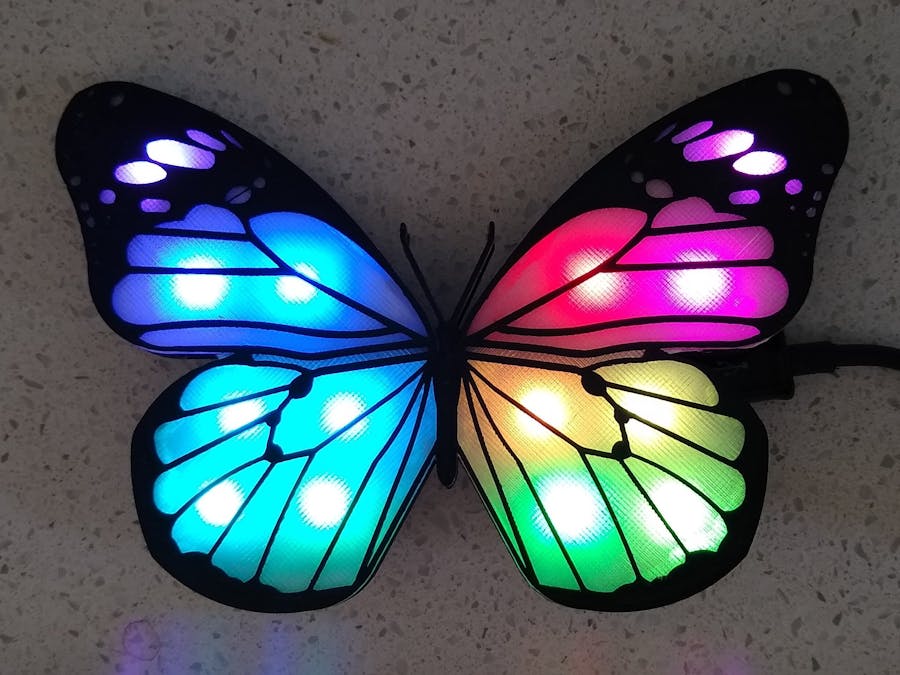A couple of years ago, I modified the butterfly created by ericchf (https://www.thingiverse.com/thing:552835) by adding 14 RGB LEDs (See https://www.thingiverse.com/make:408691). The problem with it was you had to manually mill out the space for the LED strips. Recently a few friends have also asked me to make them one. I have designed a new base that holds all the LED strips, wiring and is run by a Arduino Digispark board.
How to build itStart by printing "Butterfly Base 2.stl".
Cut the LED strips to size using a pair of sissors. Ensure you put them in the correct way round.
Wire up as shown below. I used wire-wrap wire to connect the WS2812B strips together. Wire-wrap wire is insulated single strand 30AWG wire. The wires used to connect to the Digispark is standard 7 strand hookup wire. (7/0.16 I think).
Glue on a piece of paper to act as a diffuser
Next either print "Butterfly Merged.stl" using transparent filament and switching to black filament during the print or use "Butterfly Pattern.stl" and "Butterfly Base.stl" and glue them together. Glue this to the butterfly.
Print the Digispark Bumper V1.stl and glue on back of butterfly
Connect the wires to your Digispark board +5V to +5V, P0 to Din, GND to GND.
Program the Digispark board with the Sketch provided










Comments